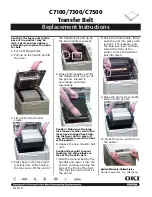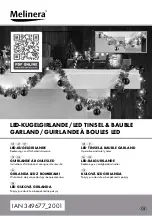
Installation and Operation Manual 90DIB500IM02 – 5.2
23
DIB-500 R4.1
Product description
Antenna coupling variants of the DIB-500 R4.1
3 Product description
In ACCESSNET
®
-T networks, the Digital Indoor Base Station (DIB-500) is used as a
network element of the base station type. The base station is responsible for radio cov-
erage in a defined radio coverage area. For this purpose, as many as eight carriers are
available depending on the variant. It can thus provide as many as 32 radio channels
(four radio channels per carrier) for the communication of the mobile terminal equip-
ment, via which voice and data is/are transmitted in accordance with the TETRA stand-
ard.
The TIB transceiver, of which multiple instances may be used depending on the
required number of carriers is responsible for radio coverage TIB (TETRA Indoor Base
Transceiver) supported by the ACS antenna coupling system ACS (Antenna coupling
system). For a location with eight carriers, for example, two equipment racks with two
TIBs each (two carriers) and an ACS each are used. In the scenario described, two Tx/
Rx antennas will be used. For diversity reception, the reception paths between the two
equipment racks will be connected.
Via the follwing interfaces the base station can be connected with other base stations
and with network elements of the System Controller Node type (e.g. Digital Mobile
eXchange, DMX):
|
E1 connections,
|
IP connections (depending on the used system software [Package Version, PV])
3.1 Antenna coupling variants of the DIB-500 R4.1
Different antenna coupling variants of the Digital Indoor Base Station (DIB-500) are
available. The selection of the corresponding antenna coupling system depends on the
network requirements.
The following antenna interfaces are available for different network requirements:
|
Hybrid variant
– Compact design
– up to eight carriers per network element (distributed on two equipment racks),
– high flexibility in frequency selection,
– flexible frequency change.
|
Cavity variant
– up to eight carriers per network element (distributed on two equipment racks),
– higher transmitting power than hybrid variant.
|
High power variant
– up to two carriers per network element,
– Higher transmitting power than hybrid and cavity variants
Antenna diversity is available for optimal reception properties.
















































